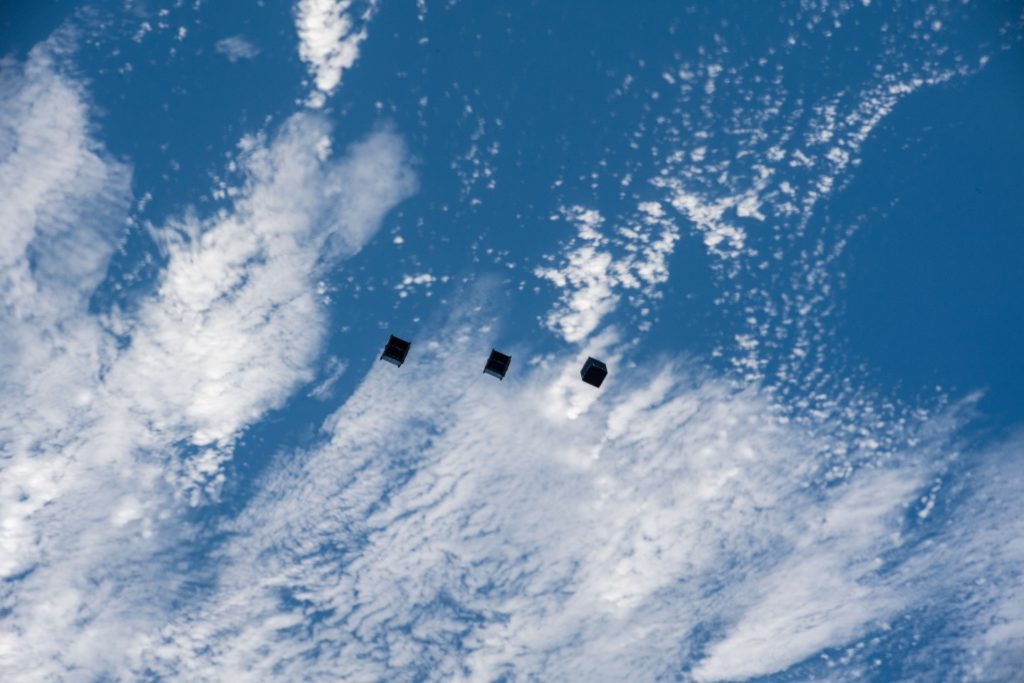SUMMARY
This is AI generated summarization, which may have errors. For context, always refer to the full article.


MANILA, Philippines – The Philippines’ Maya-3 and Maya-4 cube satellites (CubeSats)made their return from space on August 4 and August 8, respectively, according to a statement from the Department of Science and Technology (DOST) released on Monday, August 22.
The Space Technology and Applications Mastery, Innovation, and Advancement (STAMINA4Space) Program launched the two cube satellites on August 29, 2021, on a SpaceX Dragon rocket making a resupply mission to the International Space Station.
The CubeSats were built by the first batch of scholars under the Space Science and Technology Proliferation through University Partnerships (STeP-UP) project of the STAMINA4Space Program. This is funded and implemented by the University of the Philippines Diliman and the DOST Advanced Science and Technology Institute (DOST-ASTI).
Maricor Soriano, program leader of STAMINA4Space Program, said of the successful mission, “Maya-3 and Maya-4 were pivotal in the development of the local space industry. These CubeSats are experimental and educational platforms, and while all low earth orbiting satellites will eventually fall to earth, what matters more are the lasting intangibles that the project brought – knowledge, skill, partnerships, and confidence that we can do it.”
Mission
One of the missions the two satellites had to undertake was carrying a commercial off-the-shelf APRS-Digipeater Payload Demonstration (APRS-DP), which uses packet radio technology to transmit information over amateur radio. While Maya-3 had no cameras and Maya-4 had a near-infrared camera mounted on it, their missions were more or less the same.
The CubeSats were able to transmit APRS beacons to ten countries on different occasions, with amateur radio operators from 8 countries also successful in transmitting information via digipeating through the satellites.
Eight Filipino scholars were instrumental in developing the satellite: Gladys Bajaro, Derick Canceran, Bryan Custodio, Lorilyn Daquioag, Marielle Magbanua-Gregorio, Christy Raterta, Judiel Reyes, and Renzo Wee. The development of the two satellites were also part of course requirements for Master of Science or Master of Engineering under the nanosatellite engineering track.
The ‘great challenge’
“It was a great challenge to be the first to do such a project locally. Being the pioneering batch to have a local project for satellite development was not easy since expectations were high,” Reyes said.
“We had a vague map of where we were going, but we were tasked to navigate it in a local setting. But it became our greatest achievement, we were able to build the satellites and successfully deployed them into orbit,” said Reyes.
Meanwhile, engineer Gladys Bajaro said she learned a lot in the process of building the two Maya cube satellites.
“I learned a great deal about the different concepts in nanosatellite development and testing. Properly defining the design and test requirements and habitually revisiting these criteria are important as they will be the foundation when making critical decisions throughout the development phase of a satellite. But aside from that, it also helped me develop trust with my team members and nudge them to meet the project goal,” Bajaro said. – Rappler.com
Add a comment
How does this make you feel?





There are no comments yet. Add your comment to start the conversation.